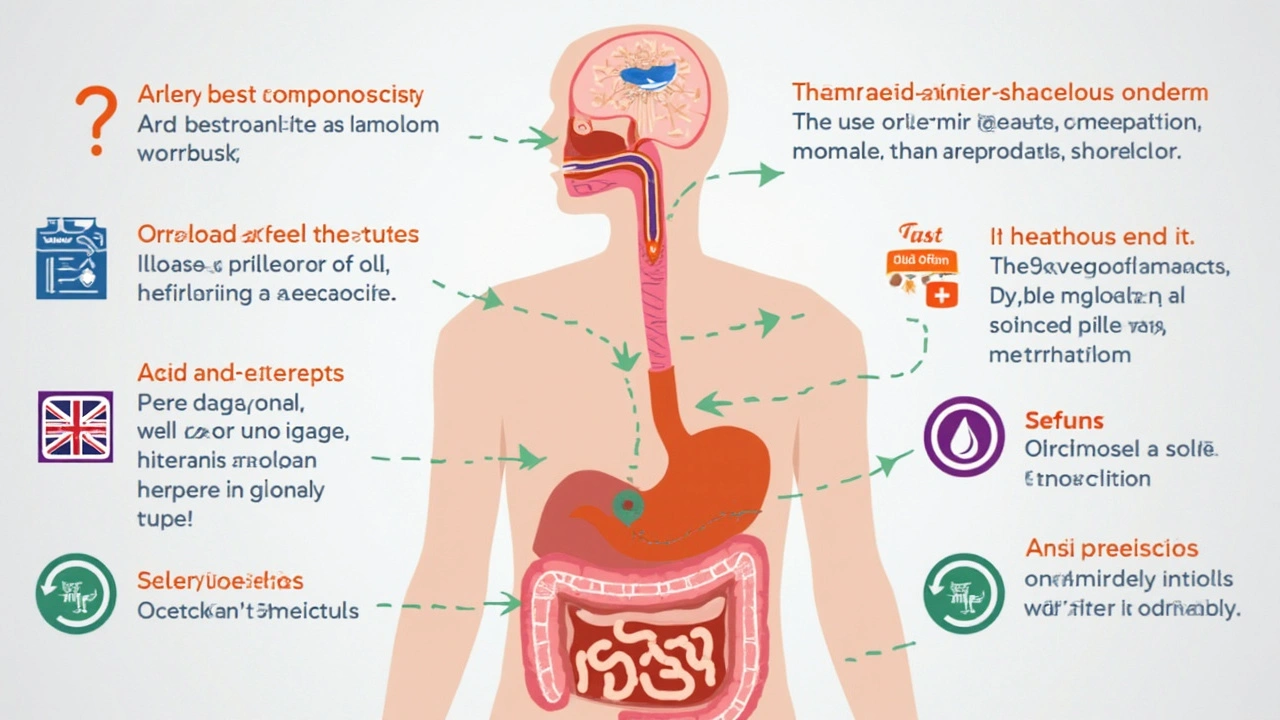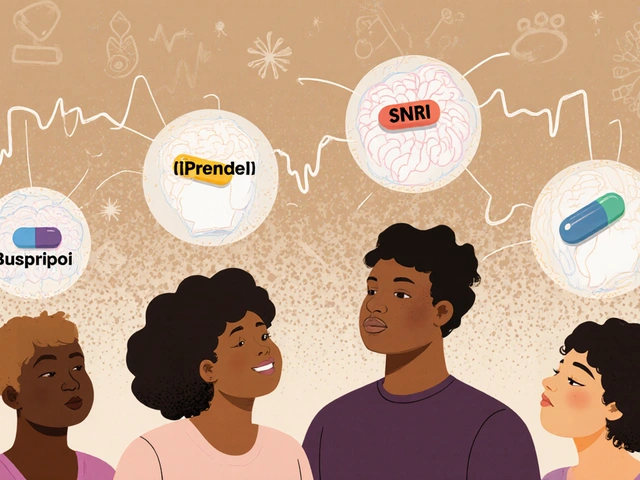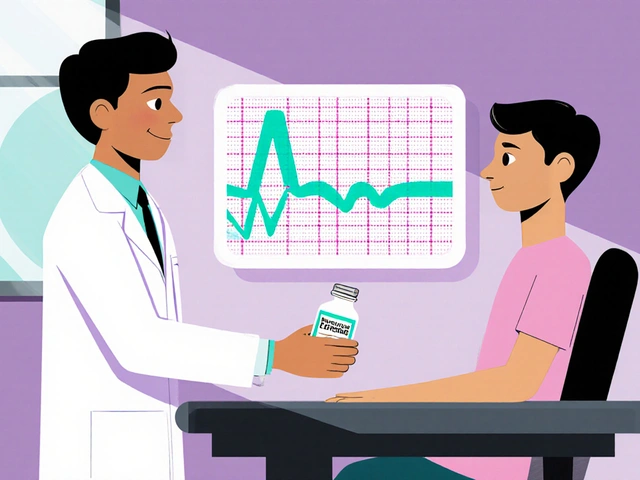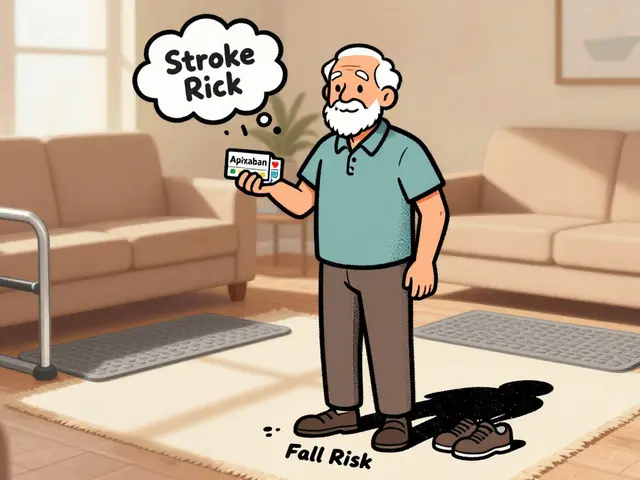Prilosec: The Real-World Guide to Uses, Benefits, and Risks of Omeprazole
You ever pop a pill for heartburn and just hope for the best? Maybe you saw that purple box—Prilosec—sitting on the drugstore shelf, promising to keep the burn away so you can have one more slice of pepperoni pizza. Seems simple enough, right? Except, what if that little pill is more complicated than you thought? Let’s rip the label right off and get honest about what Prilosec does, the science behind it, side effects you haven’t heard about, and whether it really should be your go-to for acid reflux.
What Is Prilosec and How Does It Actually Work?
Prilosec, known by its more clinical name omeprazole, is a proton pump inhibitor (or PPI for short). These aren’t your everyday antacids—they work differently. Instead of just neutralizing the acid in your stomach for a few hours, Prilosec slows down the whole production line that makes that acid in the first place.
Here’s what happens. Deep inside your stomach linings, there are little pumps called proton pumps. They shoot out acid to break down food, but sometimes, the stomach gets a little overzealous and floods itself—and your throat if it’s refluxing—with acid. That’s when you feel the burn. Prilosec sneaks in and blocks those pumps at their source. It doesn’t just lower acid for a couple of hours like Tums; it basically tells the pumps to go on vacation. The effect? Less stomach acid for about 24 hours per dose.
The FDA first gave omeprazole the stamp of approval back in 1989, making it the first-ever PPI in the US. It shook up the way doctors helped people with peptic ulcers, chronic GERD (gastroesophageal reflux disease), and a few other tricky gastrointestinal issues. Check out how Prilosec stands up against common acid reducers:
| Medication | Type | Duration of Effect | OTC or Rx |
|---|---|---|---|
| Prilosec (Omeprazole) | PPI | Up to 24 hours | Both |
| Zantac (Ranitidine)* | H2 Blocker | 6-12 hours | Both* |
| Tums (Calcium Carbonate) | Antacid | Immediate, Short-lived | OTC |
| Pepcid (Famotidine) | H2 Blocker | 6-12 hours | Both |
*Zantac was withdrawn from many markets starting in 2019 due to NDMA contamination.
But Prilosec isn’t for people looking for random heartburn relief after Taco Tuesday. It fits better if you’re facing stubborn, ongoing acid issues—think GERD, chronic heartburn that won’t quit, or healing ulcers from too much NSAID use. Still, you shouldn’t just grab it like a vitamin. Doctors usually want to see a real need before you end up taking Prilosec all the time.
When Should You Use Prilosec and When Should You Skip It?
The question isn’t whether Prilosec works. It’s pretty much a home run at lowering stomach acid. But you don’t want to just take it because you felt a tingle in your chest after spicy ramen. There’s a time and place for this stuff.
Doctors recommend Prilosec when:
- You have persistent heartburn or acid reflux multiple times a week, not just once after a giant burrito.
- You’ve been diagnosed with a stomach ulcer, or you have an infection like H. pylori (which causes ulcers).
- You have erosive esophagitis (that’s a fancy way of saying acid has started to damage your throat lining).
- You require chronic NSAIDs for another condition and need stomach protection.
If you just get heartburn once in a blue moon, antacids or an H2 blocker usually do the trick. Prilosec starts slow, usually working best if you stick to it daily for 14 days (and never forget, you need to swallow the capsule whole, not crush or chew). You’ll probably notice the full kick-in after two to four days, not instantly like popping a Tums. That can be a deal-breaker for folks craving quick relief.
Don’t bother with Prilosec if any of these sound like you:
- You want once-in-a-while, instant relief.
- You only have mild symptoms a few times a year.
- You’re looking for a casual fix before pigging out, not a solution for recurring pain.
- You have unexplained weight loss, bloody or black stools, or trouble swallowing. (With those red flags, you should see a doctor, stat.)
One sneaky fact: some over-the-counter Prilosec packages look harmless enough, so people just keep taking them month after month. But these “14-day courses” are meant to be just that—a short course. Drug stores sell enough to make you think it’s a multivitamin, but the feds and GI doctors definitely don’t agree. Chronic, unmonitored use can set you up for a few surprises, which brings us to the next messy part.

The Not-So-Sunny Side: Side Effects and Real Risks
Prilosec (omeprazole) feels like a magic bullet for burning throat and upset gut. But the truth is, dialing down your stomach acid day-in, day-out comes with some baggage.
The most common side effects are usually pretty harmless and may only show up in the first days or so—things like headaches, diarrhea, or a bit of stomach pain. If that was all there was to it, Prilosec would be a hands-down win. But some studies from the last decade are raising eyebrows. Here’s the real talk:
- Long-term use (especially more than a year) has been linked with higher risks of low magnesium, vitamin B12 deficiency, and even a slight increase in bone fractures. Why? Stomach acid helps your body unlock certain vitamins and minerals from food. No acid, no absorption—simple as that.
- There’s a possible connection between extended PPI use and kidney disease, according to a large study out of Johns Hopkins. It doesn’t mean you’ll definitely have kidney problems, but the risk is higher than with people who never take PPIs.
- Your gut bacteria take a hit over time. Acid keeps nasty bugs at bay, so when you suppress it, bad bacteria like C. difficile can sneak in and mess you up with nasty diarrhea.
- Pneumonia comes into play for older adults—less acid means germs can get closer to your lungs, especially if you already struggle with swallowing or have other illness piling on.
If you’re thinking about staying on Prilosec for months, ask your doctor—period. They’ll keep an eye on labs like magnesium and B12 and probably suggest periodic “drug holidays.”
There was this 2021 study in JAMA Internal Medicine that found folks taking PPIs daily for years were about 30% more likely to end up with chronic kidney disease than those who steered clear. That’s not sky-high, but it’s real enough to take seriously.
Statwise, here’s what’s up:
| Potential Risk | Relative Increase (%) | Notes |
|---|---|---|
| Fractures (long term) | 15-30% | Especially hip, spine, wrist |
| B12 Deficiency | Up to 65% | Mainly after 2+ years use |
| Clostridioides difficile Infection | Approx. double | Mainly hospital patients |
| Chronic Kidney Disease | 18-35% | Per some cohort studies |
It sounds scary, but these are risks over time, especially with high doses, not something you’ll see after popping a two-week course for heartburn flares.
Sneaky Drug Interactions and How to Stay Out of Trouble
Here’s a curveball: Prilosec isn’t a lone ranger in your body. It loves to meddle with other drugs, sometimes in ways nobody expects at first. The most infamous showdown: omeprazole and clopidogrel (brand name Plavix, the blood thinner).
Omeprazole can slow down how your liver activates Plavix, which can be a nightmare if you’re taking it after a heart attack or stent. Always tell your doctor if you’re mixing these two. There are safer alternatives—sometimes a different PPI or an H2 blocker can do the job without messing with your anti-clotting med.
Other interactions worth knowing about:
- Some antifungals (like ketoconazole) just don’t absorb right if there’s no acid around. So dosing them with Prilosec in your system might make the antifungal flop.
- Drugs that rely on stomach pH—think HIV meds like atazanavir, and some iron supplements—may stop working as well.
- St. John’s Wort and a few epilepsy meds get tweaked in the liver thanks to Prilosec’s enzyme effects, meaning doses might have to shift.
Tips to stay safe:
- If you need Prilosec, try to take it first thing in the morning, empty stomach, about 30-60 minutes before breakfast for best effect.
- If you’re juggling medications, don’t start Prilosec without checking with your doctor or pharmacist. Make a habit of double-checking new prescriptions or over-the-counter meds.
- If you take vitamins or supplements that need acid for absorption (like calcium carbonate or B12), space them out or look into sublingual forms or those that don’t need stomach acid.
- Keep your med list updated. It seems like a drag, but it’s a lifesaver if you end up in the ER or pick up a new prescription down the road.

How to Get the Most Out of Prilosec—And When to Get Off It
No one wants to take meds forever. For most, the magic number with Prilosec is 14 days for OTC use. But let’s say your doctor wants you on it longer—like for a healed ulcer or tough GERD. There are ways to make sure Prilosec works for you without bringing drama later.
- Set a schedule. Take it the same time every day, with water, and always on an empty stomach. Prilosec’s a time-sensitive beast.
- Don’t mix up with other acid reducers at the same time. You can take antacids, but not within two hours of your PPI dose.
- If symptoms are gone, don’t just stay on it just because you have leftover pills. The less time on PPIs, the smaller your risk of weird side effects.
- If you want to come off after long-term use, don’t stop cold turkey. The acid can rebound hard. Work with your doctor to taper down—maybe every other day, then once every few days, or shift to an H2 blocker before dropping it completely.
- Focus on lifestyle tweaks so you don’t need the meds as much: raise your bed head a few inches, ditch the tight belts, and try smaller meals. Acid triggers love late-night snacks and lying down right after you eat.
If you’re one of those folks who swears Prilosec is the only thing that keeps your heartburn away, try making a list of triggers—spicy foods, alcohol, smoking, fatty takeout—so you can see patterns and cut back without missing out on life.
Dealing with long-term Prilosec? Ask your doctor for an annual B12 blood check, grab some magnesium-rich snacks (almonds, spinach), and keep bone health in mind. Simple habits like these can help counterbalance that acid suppression.
If you forget a dose, don’t panic. Skip it and get back on schedule the next day. Double dosing is never the answer.
And here’s a final, wild tip: the purple pill is no miracle for everyone. About 10-15% of people with reflux actually don’t improve with PPIs. That means, if you’ve been on Prilosec for weeks and you still get roaring symptoms, don’t tough it out—get checked for motility disorders, allergies, or even non-acid reflux. Not all heartburn is created equal.
So, Prilosec has its place. For relentless acid and tough ulcers, it can change the game. But use it smartly—watch the calendar, pay attention to side effects, double-check your meds, and talk to your provider before treating it like a vitamin. The best results come when you (and your stomach) work together, not just when you grab the first fix off the shelf.






15 Comments
Mike Peuerböck
June 14 2025Friends we all know the lure of that purple pill when the night’s dinner burned our throats and we reach for relief. It’s a handy option when the burn won’t quit after a spicy taco. Just remember the drug works on the proton pumps not the surface acid. Use it wisely and don’t treat it like a candy.
Simon Waters
June 19 2025The government hides the real reason PPIs are always on the shelves; they want us dependent forever. They push the pills to keep the healthcare industry booming.
Vikas Kumar
June 24 2025Our country’s pharma market is flooding cheap knock‑offs without proper checks. This betrayal hurts our people and our health.
Celeste Flynn
June 29 2025If you start Prilosec, schedule a blood test after three months to check magnesium and B12 levels. Keep an eye on bone density if you stay on it longer than six months. A short 14‑day course is usually enough for occasional reflux.
Shan Reddy
July 5 2025I see your point about hidden agendas. However, the clinical data on PPIs is public and peer‑reviewed, and most doctors base prescriptions on solid evidence.
CASEY PERRY
July 10 2025Omeprazole irreversibly inhibits H+/K+ ATPase, reducing gastric acidity for up to 24 h.
Naomi Shimberg
July 15 2025While many laud the drug’s efficacy, one must consider the ecological impact of manufacturing such molecules, which is often overlooked.
kenny lastimosa
July 20 2025The quest for a fire‑free stomach mirrors our desire to silence inner turmoil, suggesting a deeper philosophical pattern in human health.
Heather ehlschide
July 26 2025Patients on long‑term PPIs should monitor magnesium quarterly and get a B12 check annually. It’s a simple way to catch deficiencies early. Adjust supplements as needed.
Kajal Gupta
July 31 2025Totally agree, checking labs is a lifesaver, especially when you’re juggling vitamins and other meds.
Zachary Blackwell
August 5 2025Did you know the big pharma lobby funds the research that downplays the kidney risks? It’s a classic cover‑up that keeps the profits flowing.
prithi mallick
August 10 2025Dont worry you can alwasy talk to your doc they will help you figure it out.
Michaela Dixon
August 15 2025Prilosec, marketed as omeprazole, has become a household name for anyone battling persistent heartburn.
Its mechanism of action revolves around the inhibition of the gastric proton pump, a process that effectively curtails acid secretion.
This pharmacological effect lasts for about twenty‑four hours, which is why many clinicians prescribe it as a once‑daily regimen.
While the short‑term benefits are undeniable, the literature over the past decade underscores a spectrum of potential adverse outcomes with prolonged use.
One of the most frequently cited concerns is the depletion of magnesium, a mineral essential for neuromuscular function and cardiac rhythm.
Studies have shown that individuals on PPIs for more than a year exhibit statistically significant drops in serum magnesium levels compared with controls.
Vitamin B12 absorption is another casualty, as gastric acidity is a key facilitator in releasing B12 from dietary proteins.
Consequently, patients may develop macrocytic anemia if supplementation is not monitored.
Bone health does not escape unscathed either; reduced calcium absorption can predispose users to hip and vertebral fractures.
The risk, although modest on an individual basis, translates into a public health consideration given the millions of over‑the‑counter purchases each year.
Renal implications have also entered the conversation, with cohort studies linking chronic PPI exposure to a heightened incidence of chronic kidney disease.
The hypothesized mechanism involves interstitial nephritis triggered by altered gut flora and systemic inflammation.
Speaking of gut flora, suppressing stomach acid creates a niche for opportunistic pathogens such as Clostridioides difficile, leading to severe colitis in vulnerable patients.
Moreover, the drug’s enzyme‑inducing properties can interfere with the bioavailability of several concomitant medications, ranging from antiplatelet agents to certain antifungals.
Clinicians therefore advocate for the shortest effective duration, periodic drug holidays, and routine laboratory surveillance.
Ultimately, a balanced approach that incorporates lifestyle modifications, dietary adjustments, and judicious pharmacotherapy yields the most sustainable relief.
Dan Danuts
August 21 2025Stay safe and keep those pills in check!
Dante Russello
August 26 2025What a thorough rundown of the pros and cons, with clear emphasis on monitoring labs, bone health, and potential drug interactions, all of which are crucial for anyone on long‑term therapy, and it nicely ties back to the need for periodic drug holidays, lifestyle changes, and regular check‑ups, which together form a comprehensive management plan.